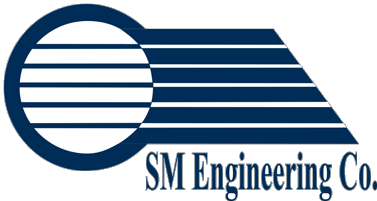A utility rate analysis is not the same as an energy audit. A rate analysis is analyzing the bills to uncover errors, overcharges and different rate options to reduce the cost without making any changes to the life style. An energy audit looks for lowering consumption by more efficient lighting and motors, and a change in operation.
An in depth look at a utility rate analysis
Virtually every case of overcharging is the result of human or computer error. When you consider the complexity of the bills, and the thousands or millions of accounts that a given utility company has to process each month, it is not surprising that mistakes are made.
There are many different factors in your bills, some hidden and some not, which can lead to billing errors and overcharges. Rates, tariffs, demand charges, revenue taxes, surcharges, fuel adjustments, reactive charges and miscellaneous credits can all be miscalculated and misapplied.
To review utility bills, SM Engineering will first do a complete accounting type function of the bills. We call this level (1) analysis. This requires obtaining the most current utility tariff and reconstructing the bills based on actual incremental rates. By comparing the utility charges to the actual tariffs it allows us to spot billing errors, meter reading errors and computation errors. We also look for any credits or growth zone pricing. If any credits or overcharges are discovered, then the necessary forms are filled out to apply for the credit.
Three areas for analyzing utility bills
Electricity
Electricity offers many options because there are so many rates that could be applicable to your service.
Some of the most common rates are:
- Small General Service
- General Service
- Small General Service TOD
- General Service TOD
- Primary, Secondary or Transmission Line Service
- …and the list goes on.
In addition to selecting the least cost rate, there are also mistakes in building classification, ratchet clauses, interim rate adjustments, demand charges, credit for new loads, etc.
One example is a 140-unit condominium property. We were able to select a rate, which fit their specific type of usage more effectively. By doing so, we were able to save them $2,500 per year. They will continue to incur this savings for many years to come.
Natural gas
Natural gas bills offer opportunities also, other than mathematical errors, errors in classification and meter errors. For instance, there is small volume vs. large volume – firm services vs. interruptible service and then there are options to buy natural gas just like a commodity on the spot market.
There are also special negotiated prices of natural gas based on your ability to burn alternative fuels at a lower cost. This is called economy based gas pricing.
One example is the case of a manufacturer that we recommended changing his rate from firm service to firm service with a contract demand charge. This meant that he would pay a higher basic charge but would receive a discount on all natural gas they consumed. Based on a 12-month comparison, they’re saving $18,000/year with no capital cost at all.
In another instance, we designed and took bids on a standby propane/air system so our client could save $80,000/year by switching to an interruptible service. The cost of the installation provided just over a 1-year payback plus providing back-up fuel in case of utility shortage.
Water
The water bill is typically made up of a basic charge, meter charge, or consumption charge on a sewer charge.
The meter charge usually is based on the size of the meter. The bigger the meter the bigger the basic charge.
Questions can arise such as:
- Is the meter sized correctly?
- Does the meter size compare to the meter charge?
- Is any water leaving the facility other than the sanitary sewer, for example lawn irrigation, cooling tower evaporation, non-contact cooling to storm sewer? (All water that does not ultimately go to the sanitary sewer may be eligible for a credit on sewer charges.)
There is much money to be saved in the proper rate choices but it will be up to the end user to seek these savings through knowledge of the utility environment
In summary, what we do is really a combination of two disciplines: an accounting type function of the utility bills and drawing upon our engineering expertise to make the final recommendations.
If you’d like to see how we can help you lower your businesses utility expenses, request a free no-obligation consultation.


